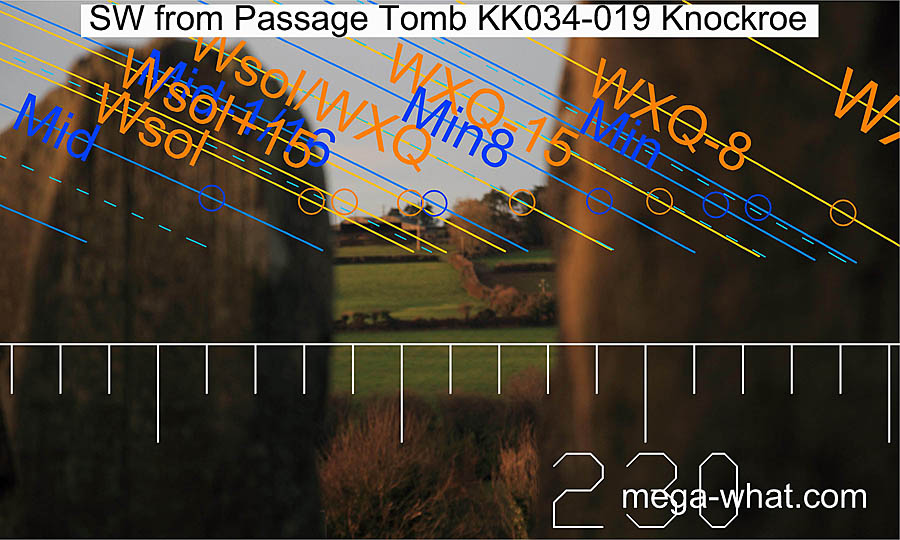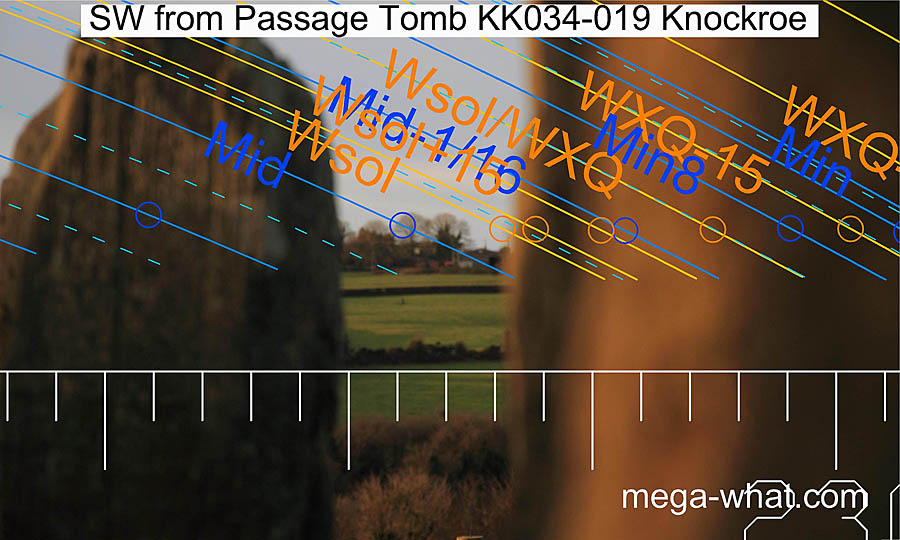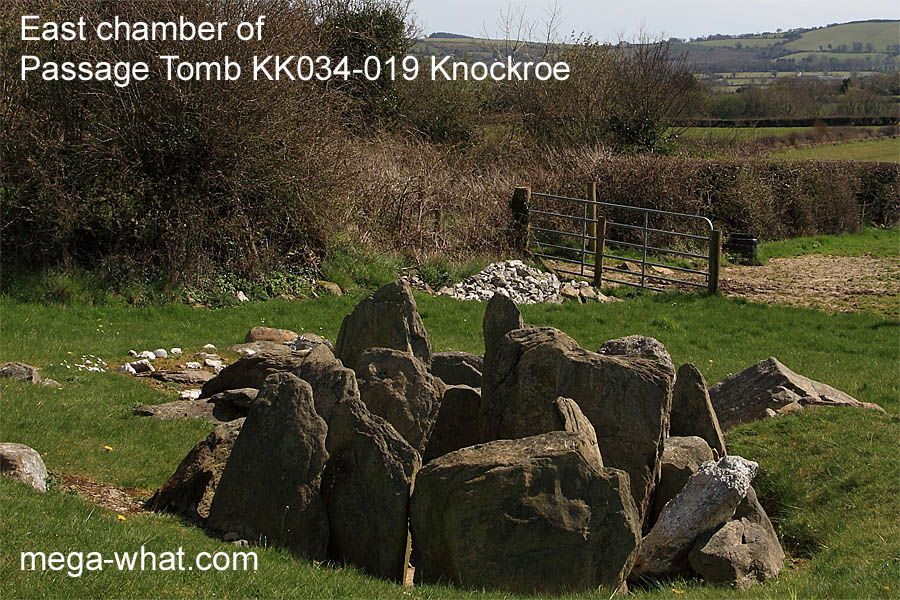
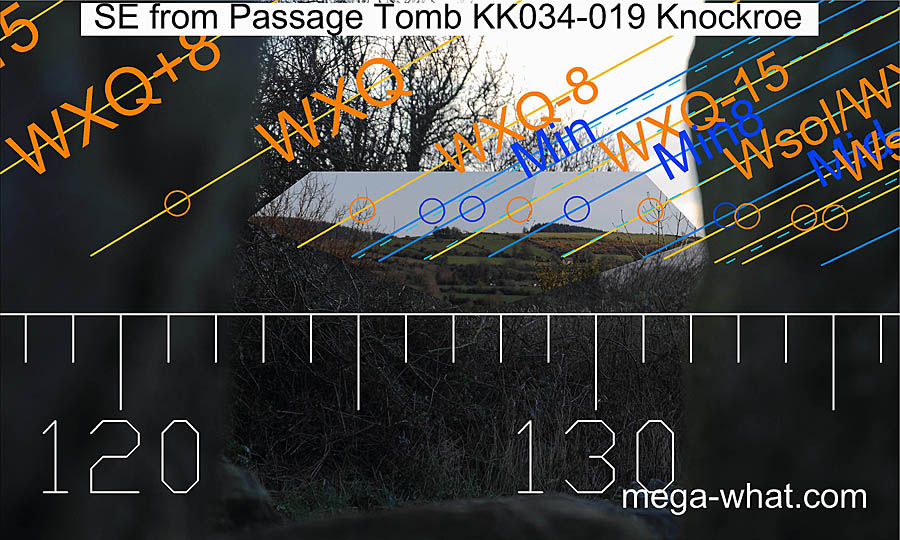 The eastern passage has been found to be earlier and has a defined side chamber. Its axis is not easy to determine due to trees in the foreground but enough horizon points were identified to make a good approximation possible.
The eastern passage has been found to be earlier and has a defined side chamber. Its axis is not easy to determine due to trees in the foreground but enough horizon points were identified to make a good approximation possible.
This passage seems to be centred about a half-month south of the winter cross-quarters; i.e. after Samhain and before Imbolc. Lunar minor standstillsLunistice positions vary cyclically over an 18.6 year period but are fairly static for more than a year at either end of the range are also fairly central and well marked by the basal step of a hill.
The western passage is larger and well decorated. It is also asymmetrical, with a bit of an alcove on the western side that widens the chamber without itself forming a formal side chamber.

 The backstone has a good number of carvings on it but the western alcove has more.
The backstone has a good number of carvings on it but the western alcove has more.

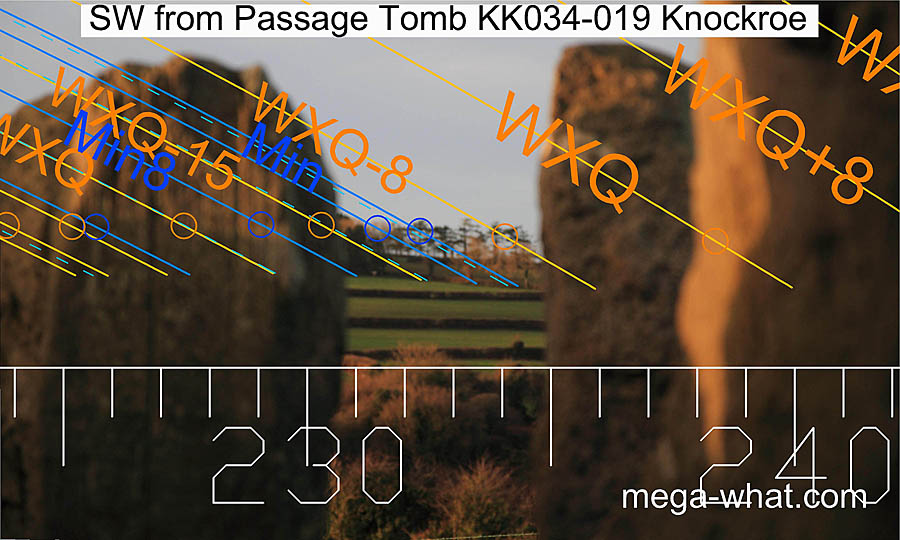 The SW passage axis seems to be centred on the lunar minor standstill
Lunistice positions vary cyclically over an 18.6 year period but are fairly static for more than a year at either end of the range.
The SW passage axis seems to be centred on the lunar minor standstill
Lunistice positions vary cyclically over an 18.6 year period but are fairly static for more than a year at either end of the range.
However, the shape of the passage allows for a wide range of positions within the chamber.
- The eastern side of the chamber would probably receive light from the setting sun at the winter cross-quarters, i.e. Samhain and Imbolc.
- On the the western side, a position such that the edge of the alcove just obscures the west portal is the outer edge of where the sunbeam would land at Winter Solstice.
- Further into the alcove and the available window narrows but then, as well as the solstice sun, the setting mid-summer full moon shines in at a time when it is half-way between major and minor standstills Lunistice positions vary cyclically over an 18.6 year period but are fairly static for more than a year at either end of the range.
To summarise, the western passage has been constructed in such a way that, despite its narrow entrance, it allows sunlight to enter the chamber for the entire period from Samhain to Winter Solstice and back again to Imbolc. It seems that the passage could be centred on lunar minor standstillLunistice positions vary cyclically over an 18.6 year period but are fairly static for more than a year at either end of the range and would allow the light of mid-summer full moon sets to penetrate for the entire minor half of the lunar cycle, about nine years in total. Remember that the eastern passage also has lunar minor standstillLunistice positions vary cyclically over an 18.6 year period but are fairly static for more than a year at either end of the range fairly centrally placed.
Popularly, the passages are aligned to Winter Solstice, rise and set. While the western passage does permit the solstitial sun to shine in, the eastern one clearly never did and will not ever. Perhaps then it would be more accurate to say that both passages were aligned to the minor standstills but were cleverly contrived to do much more than indicate a single event.


